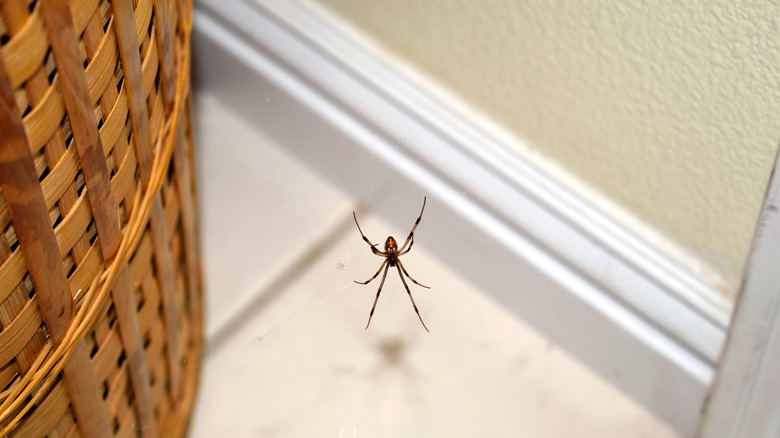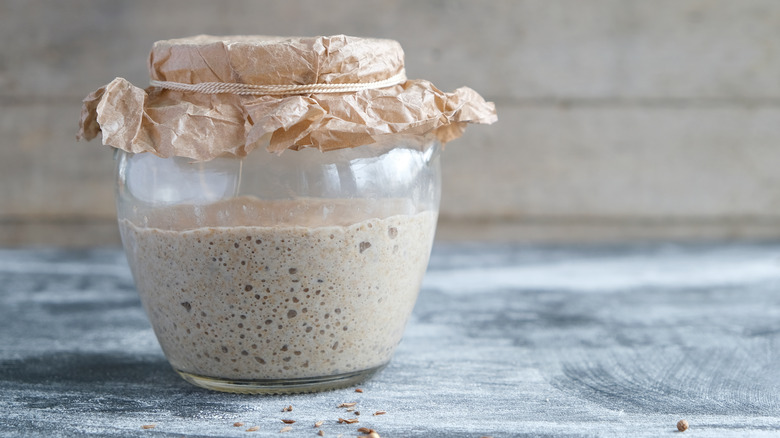Why You'll Want To Save Leftover Yeast To Get Rid Of Spiders
For many, spiders are the top insect they never want to see inside their homes. These arachnids are sneaky, creepy, and give some painful, itchy bites. While we take the time to keep our homes cleaned and organized to prevent them from making an appearance, they somehow always find an unexpected way to welcome themselves. You might have tried dozens of common household staples to get rid of spiders, but perhaps they haven't worked as well as you wanted them to. Instead of wasting vinegar and citrus peels, save leftover yeast to scare off spiders. Active yeast has a strong, potent scent that only insects can smell, causing spiders to run in the opposite direction.
Whether you bake for fun or do it for a living, the next time you make cinnamon rolls or sourdough bread, set aside a little bit of yeast to deter and get rid of spiders. Using yeast is more beneficial than calling a professional exterminator who will use chemical products that are harmful to the spiders. Further, inhaling too much insecticide that exterminators use can harm your health. So, sprinkling small amounts of yeast around the house is one of the best ways to get rid of spiders. However, there are still a few precautions to consider before covering your home in yeast.
Deterring spiders with yeast and safety precautions
While spiders hate most smells, especially potent essential oils like peppermint, active yeast is at the top of the list of scents that they despise. So, use it to your advantage and place small dollops of yeast where you've seen them crawling around. You don't need much, and the recipe is simple. You can use leftover yeast from baking or mix dry yeast with water and let it thicken before putting it around your home. When the spiders crawl out from areas near the yeast, they'll get a strong whiff of it through their legs and return to where they came from.
Even though yeast deters spiders, it's vital to take safety precautions when handling it. Yeast releases carbon dioxide when it's left out for too long, which could be detrimental to people's respiratory systems. Inhaling too much carbon dioxide can cause chest tightness, breathlessness, and respiratory irritation. On the other hand, some folks who touch yeast can get an allergic reaction, especially if they touch it for too long. Wear gloves when handling yeast or use a spoon to ensure your skin doesn't come into contact with it. If you decide to use yeast around your house, only keep it out for a limited amount of time, especially if you have kids.

